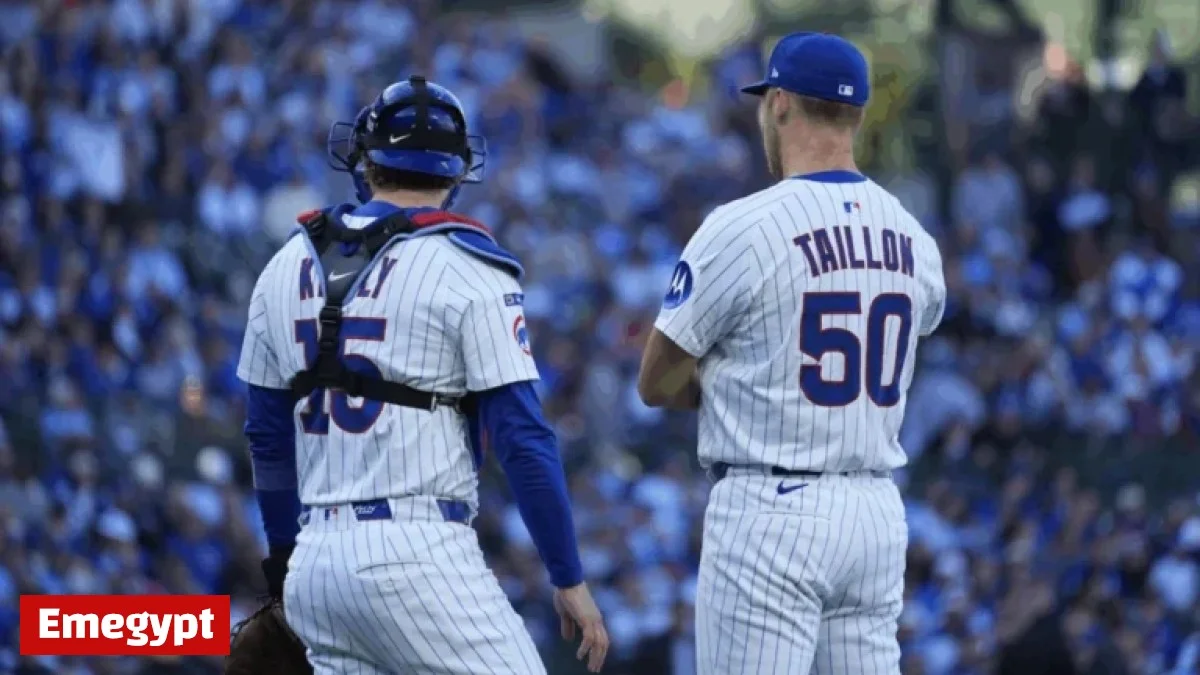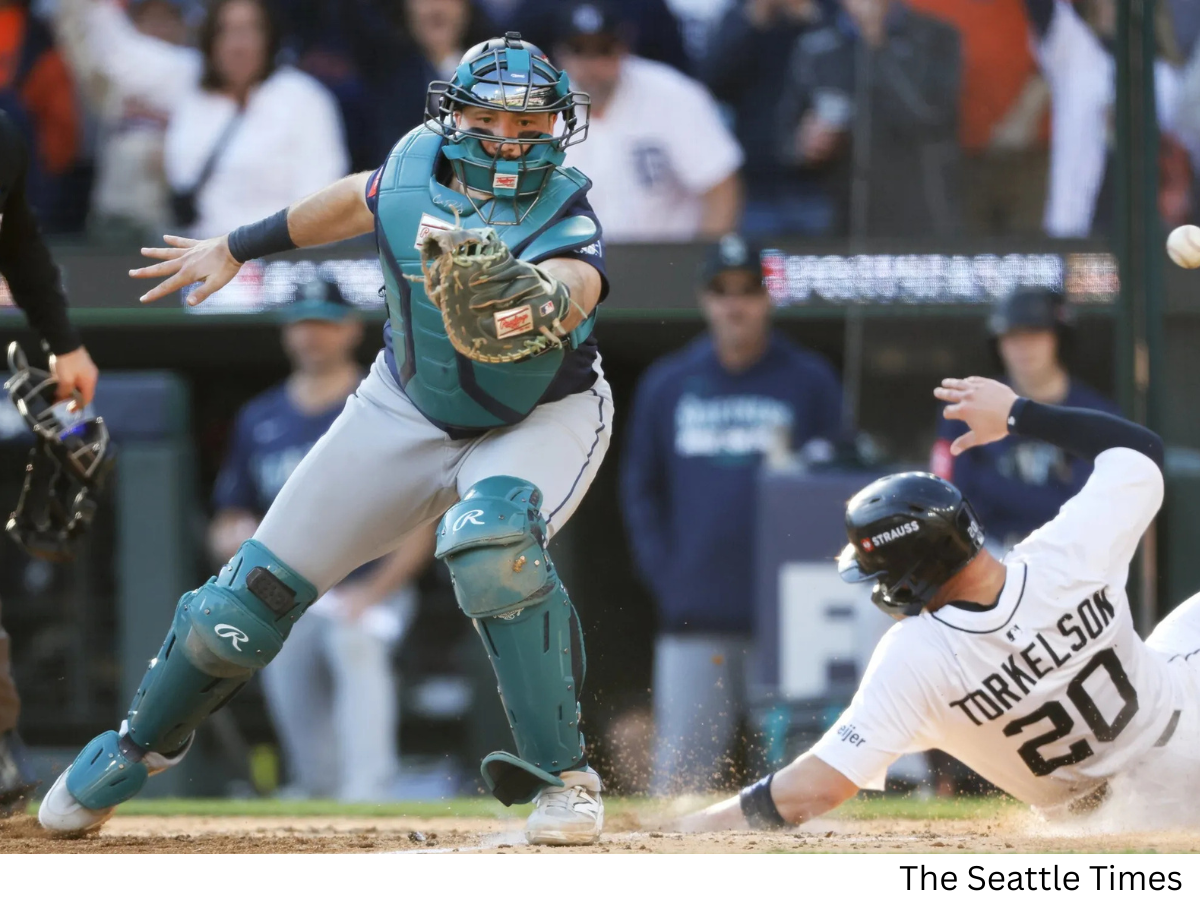Game 3 of the 2025 National League Division Series (NLDS) between the Chicago Cubs and the Milwaukee Brewers provided fans with all the drama expected from October baseball—and then some. While postseason games are often filled with tension and momentum swings, the first inning of this matchup sparked controversy that had players, coaches, and fans talking long after the dust settled.
The Play That Started It All
The controversy began with one out and runners on first and second base, a classic setup for a pivotal moment in a postseason game. Brewers catcher William Contreras hit a high pop-up near the first-base line. As the ball arched toward the infield, Cubs first baseman Michael Busch lost the ball in the sun, while second baseman Nico Hoerner and shortstop Dansby Swanson converged but failed to make the catch. The ball dropped untouched, instantly loading the bases for Milwaukee.
The critical question that arose in the immediate aftermath was whether the infield fly rule should have been invoked. According to Major League Baseball (MLB) guidelines, an infield fly is called when a fair fly ball can be caught by an infielder with “ordinary effort” when first and second—or first, second, and third—bases are occupied, provided there are fewer than two outs.
In this instance, the umpires decided not to call the infield fly rule. The rationale was that no Cubs player was in position to catch the ball with ordinary effort. Umpire supervisor Larry Young later clarified that the call is made once the ball reaches its apex and begins to descend. By that point, the umpires determined that no fielder could make a play under ordinary circumstances. This decision immediately drew both criticism and support from fans, analysts, and players alike.
Reaction From the Field
The Cubs’ players, including manager Craig Counsell and second baseman Nico Hoerner, publicly agreed with the decision, acknowledging the umpires made the right call. Counsell noted, “It was a tough play, and our guys did everything they could. The umpires judged it correctly based on their guidelines.” Brewers players, meanwhile, were more circumspect in their reaction, recognizing that while the non-call benefited Milwaukee momentarily, the Cubs were capable of responding in the postseason environment.
Despite the confusion, the Brewers were able to capitalize immediately. Sal Frelick hit a sacrifice fly that brought home the game’s first run, giving Milwaukee an early 1-0 lead. For a moment, it seemed that the miscue and the rules debate had shifted momentum firmly in favor of the Brewers.
Cubs Respond with Authority
However, Chicago quickly demonstrated why the postseason is unpredictable and why no lead is truly safe. In the bottom of the first inning, the Cubs unleashed a four-run rally that shifted the tone of the game entirely. Michael Busch, who had struggled to make the infield play earlier, came up big at the plate with a leadoff home run that tied the game. Pete Crow-Armstrong followed with a two-run single, giving Chicago a temporary lead and setting the stage for an emotional and dramatic contest.
The Cubs’ ability to respond after a controversial and potentially demoralizing start showcased the resilience required in October baseball. It also underscored a key reality of postseason play: mistakes, controversial calls, and unpredictable plays are part of the game, but a team’s response often defines their ultimate fate. Chicago’s 4-3 victory in Game 3 allowed them to avoid elimination and forced a Game 4, keeping the NLDS alive and providing fans with more high-stakes drama.
The Rule Debate
The controversy reignited discussion about the infield fly rule itself, a rule that has long been both misunderstood and debated among fans. The rule exists to prevent infielders from intentionally dropping pop-ups to create force plays and double plays when the bases are loaded. Yet the subjective nature of what constitutes “ordinary effort” often leads to confusion, particularly when balls are hit near the boundaries of the infield or when visibility is impaired by sunlight, shadows, or other environmental factors.
In this particular scenario, the sun’s glare and the ball’s trajectory made the ordinary effort assessment especially challenging. Umpires are trained to make these split-second judgments, but the controversy illustrates how even experienced officials can face scrutiny under postseason pressure. As one analyst noted, “The infield fly rule is one of baseball’s most complicated rules to apply consistently. When it’s a postseason game, every call is magnified tenfold.”
Implications for the Series
While the immediate controversy centered on a single play, its impact on the series as a whole cannot be understated. The Brewers initially appeared to gain an advantage with the first run, but the Cubs’ first-inning rally shifted the momentum. Chicago’s ability to overcome adversity and respond with timely hitting and effective defense highlights why they remain formidable opponents in the NLDS.
For Milwaukee, the incident is a reminder of how quickly opportunities can slip away in the postseason. Baseball, with its long-standing traditions and complex rules, demands not only skill but also mental resilience. Teams that can maintain focus and adapt to unexpected situations often succeed under these pressures.
A Postseason Lesson
Ultimately, the Cubs vs Brewers Game 3 first-inning controversy serves as a case study in the unpredictable nature of playoff baseball. The combination of rule interpretation, environmental factors, and split-second decision-making by players and umpires created a scenario that captivated fans across the nation. Beyond the immediate debate, the game reinforced the core principles of postseason play: focus, adaptability, and the ability to respond to adversity.
The incident also highlights the importance of clear communication among players. Miscommunication among Cubs fielders on the pop-up contributed to the initial confusion, emphasizing that teamwork and coordination are just as crucial as individual talent.
As the NLDS continues, both teams will undoubtedly review this play extensively. Lessons learned from this moment could influence defensive positioning, coaching strategies, and even how umpires approach similar situations in the future.
Conclusion
Game 3 of the 2025 NLDS between the Cubs and Brewers demonstrated why postseason baseball remains among the most compelling spectacles in sports. A controversial play in the first inning sparked debate, tested both teams’ resilience, and set the stage for a thrilling contest. In the end, the Cubs’ four-run response secured a crucial victory, underscoring that in October, no lead is safe, and no mistake is permanent. The game will be remembered not only for the controversy but also for the intensity, drama, and sheer unpredictability that define baseball at its highest level.
%20(4).png)





.png)


